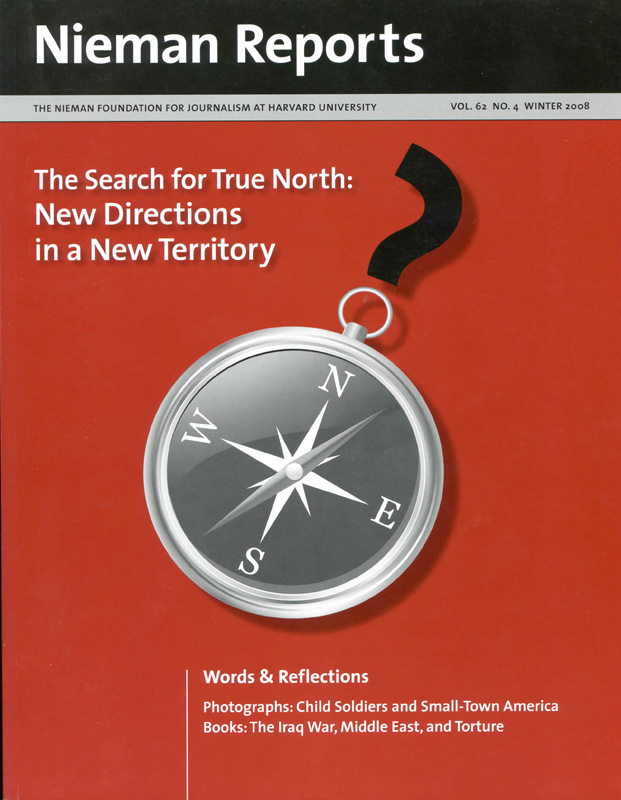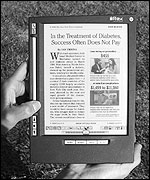First I must confess that I am a 65-year-old, gray-haired American white guy who worked in the newspaper business for 34 years before joining the academic community as a journalism professor and researcher. If you believe that identifies me as a technophobic curmudgeon who is stuck in the past and incapable of comprehending the minds of young people today, well—let’s just say for the sake of argument that you might be partially correct.
It’s true there are times when new technologies do frustrate and anger me, especially when they make me feel stupid. And I am occasionally perplexed by the mindsets of some journalism students, often in regard to newspapers and online news. But pigeonholing me, along with everyone else, based on age, gender, skin color, nationality and career, doesn’t define me. Generalities about groups of people may simplify marketing strategies and help some politicians get elected, but they don’t tell you much about individuals—or our behavior— especially in the expansive realm of new media.
To make my point, I’ve been actively involved in the digitization of newspapers and the development of online media and digital editions since the 1970’s. In my present role as program director for digital publishing at the Donald W. Reynolds Journalism Institute, I work with students, journalists and media practitioners to exploit the potential of e-readers and other emerging digital publishing technologies. I make extensive use of computers, know my way around the Internet and Web, own an Apple iPhone, read books on an Amazon Kindle, and occasionally participate in blogs. I also enjoy reading the newsprint editions of The New York Times and Columbia Missourian every morning with breakfast and prefer interacting with friends and colleagues face-to-face or by phone rather than through Facebook or other online social networks.
Exploring New Media Habits
Enough about me. Better to share with you a few personal observations about how people deal with new media technologies. Some of those come from usability research and focus groups, but most come from my experiences working on digital publishing projects with people who have ranged in age from 18 to 80.
Perhaps the most frequently repeated myth is that all young people (teens and 20-somethings) eagerly and quickly embrace new media technologies and are adept using them, while all old people (age 40 and older) reluctantly and slowly adopt new media technologies and are inept using them. As with all myths, there is some truth in this one. But in my career I’ve usually found wide variances and no absolute delineators within and between age groups.
This was demonstrated when, at Missouri, we began conducting focus groups last spring to assess receptiveness to reading newspapers and books on e-readers—the recently introduced mobile devices that employ a new media technology called electronic paper displays (EPDs). E-readers are envisioned as “green” alternatives to paper and function more like iPods than PCs or intelligent phones.
Our first sessions, held during our spring semester, involved a total of 43 students from the Missouri School of Journalism. None of them had used or even seen e-readers prior to the sessions. All were asked to read a few pages of a digital newsbook—a special report from a newspaper that has been repackaged in an e-book-like format—on a notebook computer, a small pen-based tablet PC, and an e-reader. (We used iLiad readers, which have eight-inch high-resolution EPDs and more advanced features than the smaller Amazon Kindles.) After reading on each device, they were instructed to complete a brief questionnaire. At the conclusion of their sessions, they completed final questionnaires and participated in open discussions about their reading experiences.
Data compiled from the questionnaires seemed to suggest that a majority of students would embrace e-readers. Here’s how they ranked the three devices as a display medium for reading:
- Nearly two out of three ranked the e-reader as their first choice.
- One out of four ranked their notebook computer as their first choice.
- Only one out of eight selected the tablet PC first.
When asked about their comfort with these devices for reading, 60 percent indicated they were very comfortable or somewhat comfortable with the e-reader compared with 63 percent saying this about their notebook computer. The students’ relatively high level of comfort with the e-reader was more striking in contrast to the tablet PC. Only 33 percent indicated they were very comfortable or somewhat comfortable with this device.
These same students routinely use Macintosh computers, so the tablet PC (built upon Microsoft Windows technology) was almost as new and unfamiliar to them as the e-reader. Both devices were about the same size and used a stylus for input instead of a keyboard and mouse. So we wondered why the students rated these two new media technologies so differently.
From their comments on the questionnaire and in the open discussions, the difference that clearly gave the e-reader its greatest advantage was its simplicity and ease of use. This is not a particularly surprising revelation. In all of the usability studies I conducted in the 1990’s at the Knight Ridder Information Design Laboratory and Kent State University, simplicity and ease of use were always identified as the most important qualities of any new electronic device or digital publication by a majority of participants in all age groups.
With this experiment, however, what I found more interesting—and a bit surprising, in light of the typical description of how this age group is reacting to new media technologies—were the comments students made about switching from reading on paper to reading on e-readers. Though quite a few described the e-reader as “awesome,” “pretty cool,” and “sweet,” a significant number said they were not ready to give up paper. Their comments ranged from “I’d still prefer to use paper textbooks” to “I don’t like reading on computers” and “I’ll never not read a paper-based product for newspapers, magazines or books.”
AUTHOR’S NOTE
The eight attributes include ease of use (simplicity, short learning curve), full color, portability (thin and lightweight), paper-like readability (readable anywhere), video capability, markup (ability to take notes and highlight text), content presentation (layout, design and typography), and long battery duty cycle.Another interesting finding was the relative importance students attached to eight attributes that could influence their reading experience on mobile electronic displays unrelated to any specific device. We had assumed that students would rank full-color and video-capable displays at the top of their lists. They didn’t. Only one student ranked color second; three students ranked it third. None ranked it first. Of the eight choices, 16 students (37 percent) ranked color seventh or eighth. Video was ranked last or next to last by 88 percent of the students. Only one student ranked it third; none ranked it first or second.
For companies now manufacturing and selling e-readers this could be encouraging because all EPDs today are black-and-white and not capable of displaying videos. Full color EPDs with a capacity to display videos are expected in three to five years. The attributes students ranked highest were portability, ease of use, and readability, which is what e-readers are all about.
We plan to do several dozen focus group sessions in Missouri this year and early next that will include students and faculty from schools other than journalism as well as local residents who are not affiliated with the university. It’s possible that we will repeat this study in subsequent years to see how attitudes about reading digital publications on e-readers change over time.
Our findings should be of more than academic interest to publishers and journalists. In the past 40 years digital technologies have been the salvation of newspapers and magazines. They have transformed publishing from a labor-intensive manufacturing and distribution industry into an efficient information processing and dissemination business. Today, the last vestiges of industrial age technologies are the printing presses and delivery trucks.
In theory, the development and widespread adoption of e-readers—with a capacity to wirelessly access and display digital editions of newspapers and magazines—would allow publishers to eliminate the production and distribution costs associated with their printed editions, which now account for more than half of most publishers’ operating expenses. All of this depends, however, on the capacity of e-readers to provide a reading experience comparable to ink printed on paper at a competitive price and on the willingness of readers and advertisers to adopt this new media technology for reading.
Roger Fidler is program director for digital publishing at the Donald W. Reynolds Journalism Institute at the Missouri School of Journalism. By March, a complete report about this study is expected to be available on the Reynolds Journalism Institute Web site, www.rjionline.org.



